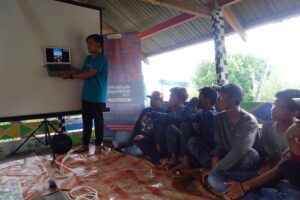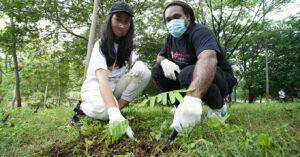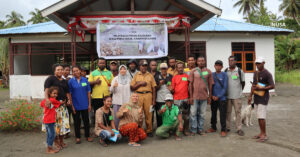
Maluku Province has very immense potential of fisheries. The potentials in Maluku reach 1.62 million tons per year as reported by kompas.com. More than 20 percent of national fisheries resources come from Maluku water. Besides, 3 out of 9 major fishing grounds in Indonesia is located at Maluku water, namely Banda, Arafura and Seram Sea. Considering the potentials, the government plans to build a National Fish Reserve (LIN) in Maluku.
Maluku Province’s Maritime Affairs and Fisheries Office Head, Abdul Haris, explained that Maluku was designated as the special spot of LIN as it meets some criteria. Maluku has more than 2 fishing grounds located at 3 regions in Maluku. It has 37 percent of fish resource potentials or more than 20 percent of the national fish resources as the minimum standard. Fisheries production in Maluku have contributed 12.4 percent or doubled from 6 percent as the government criteria for the minimum of national fisheries production. Besides, it has fisheries production service area nationwide.
The development of LIN in Maluku will be kicked off in 2022 with completion target in 2023. It aims to secure the availability of sustainable fish resource stocks, to improve community economy and to create effective and efficient maritime and fisheries management. Abdul Haris added that the LIN center will be constructed on 700 hectare plots of land in Ambon Island.
Read also: Illegal Fishing Putting Future Indonesian Sea at Risk
To support the LIN development, the Maritime Affairs and Fisheries (KKP) Ministry has conducted human resources capacity building, infrastructure development, regulation and bureaucracy simplification, and economic transformation as the basis for KKP policy. This was addressed by KKP’s Maritime Management Directorate General Secretary, Hendra Yusran Siry.
Hendra explained that as part of the human resources capacity building, the ministry focuses on human resources development for indigenous people. “Our target in 2021 is 8 indigenous communities. We will conduct an identification and mapping, community assistance, strengthening and empowerment, up to institutional self-reliance. Thus, the indigenous community will not only get recognition of their management rights but also get economic empowerment,” said Hendra.
Maluku actually has possessed their own local wisdom on utilization of ocean resources through sasi practice. This is a traditional ban for taking natural resources both agriculture and sea resources before the permitted time is given. It aims to care for the sustainability of natural resources so as to continue getting the benefits. The community could harvest together and thus they get yield from their hard works.
Read also: Eliza, Local Forest and Sea Ranger in Negeri Haruku
Eliza Kissya as chief of Haruku kewang (local environment defender) spoke on the practices of sasi in Haruku to defend ocean. “What is defended on ocean? We watch people not to use floating bagan ( floating bamboo on the sea with net to catch fish). It has been years that no floating bagan is allowed in Haruku. If it exists, we cannot enjoy the festivity of sasi lompa. It has valuable selling point for Haruku to the world. All communities could enjoy the yields of 30-40 tons of lompa fish during harvest time,” said Eli.
Responding to LIN project in Maluku, Pattimura University’s Senior Lecturer for Fisheries Resources Utilization, Agus Tupamahu, said that fisheries management should be the government’s priority. It needs warranty to resist mortality due to fisheries catch from exceeding the survival of population. It would not threaten or even damage the productivity and sustainability of fish population. It needs control over fish catch so as not to eliminate fish population on that region. The statement was made on the virtual discussion entitled “National Fish Reserve for Whom?” held by EcoNusa on January 30, 2021.
Agus highlighted that the government should also review the definition of small scale fisheries or fisher in relation to sustainable management. “The government should designate the size of small scale fisher boat of under 5 gross ton(GT), because if it goes beyond 10 GT it would be dangerous. Mafia could make use of the situation to create an armada with small scale fisher definition to exploit fisheries resources because they are not obliged to acquire permit for small scale fisher,” said Agus.
Read also: Waste, Major Concern of Maluku Young Kewang
The statement refers to the regulation stipulating that small scale fisher fishing boat shall be 10 GT at the biggest size. The current regulation also mandates that small scale fisher must not obligatorily have permit.
Women activist, Laila Dwitari Tuasikal, added that it is necessary to involve stakeholders in the National Fish Reserve to minimize the impact of ocean ecosystem damage due to fishing practices that are not eco-friendly and violate the law. “At least there are 5 solid elements, namely government, university, community, association and non-fishery actor,” she said.
Editor: Leo Wahyudi




